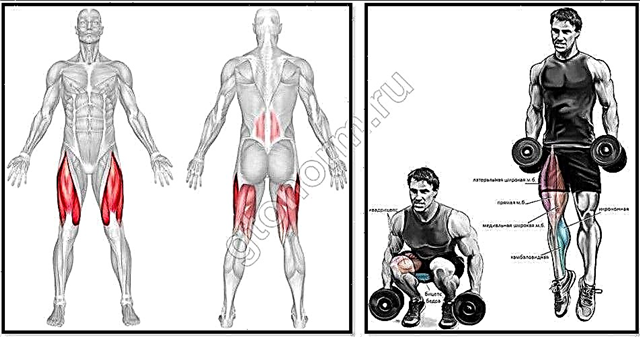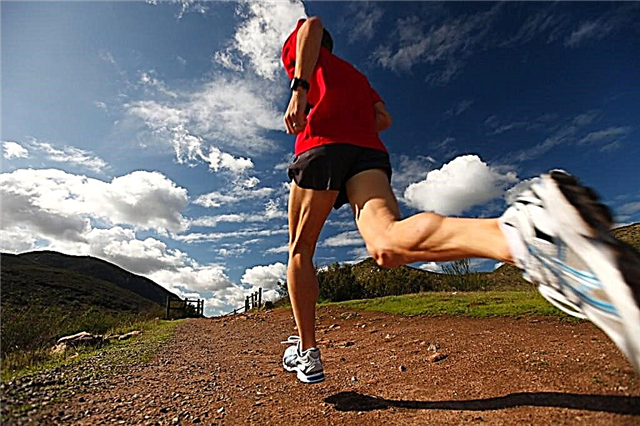Jump squats are considered explosive exercises, as they require an increased expenditure of strength. This is a great way to increase the load, burn more calories, and force the body out of its comfort zone.
What muscles work?
The Jump Squat gives you full body work from heels to crown. In addition to the need to control the correct squatting technique, the athlete must monitor balance. Balance helps maintain the correct torso position during the jump. Thus, not only the target muscles work, but also the stabilizing muscles, arms, etc.
So, let's list which muscles work when doing jump squats:
- The gluteus maximus muscle;
- Quadriceps;
- Back and inner thighs (biceps and adductors);
- Calf muscles;
- Press;
- Back and arms.

The benefits and harms of exercise
Here are the benefits of jumping squats:
- Exercise improves the tone of the muscles of the thighs, buttocks, abs, tightens the skin;
- Helps to form beautiful muscle relief;
- Strengthens the cardiovascular system;
- Actively starts the process of fat burning;
- Strengthens the muscle corset, helps to improve the sense of balance;
The jump squat exercise is very effective, especially in interval or circuit training, where the cardio complex is combined with strength. Please note that there are a number of contraindications in which jumping out of the squat is strictly prohibited.
As we already said, the exercise belongs to the category of explosive exercises - it is performed at a fast pace, powerfully, often in jerks (for example, explosive push-ups with a clap behind the back). It is difficult for an athlete to control the correct position of the body in space, so it is important to thoroughly study and work out the technique. Otherwise, there is a high risk of injury to the knees or spine.
Contraindications include:
- Exacerbation of any chronic diseases;
- Diseases of the heart and respiratory system;
- Conditions after a stroke, heart attack;
- Any inflammation, including fever;
- Feeling unwell (weakness, migraine, headache, pressure);
- After abdominal operations;
- Diseases of the joints of the legs or the musculoskeletal system;
- Any conditions incompatible with physical activity.

Execution technique
Let's break down the correct technique for performing the jump squat:
- Starting position - as for classic squats. Legs shoulder-width apart, arms straight along the torso, look forward, back straight, knees and socks look in one direction;
- As you inhale, lower yourself down until your hips are parallel to the floor, forming an angle of 90 degrees with your knees;
- As you exhale, jump powerfully straight up, reach with the crown of your head to the ceiling;
- Return to the 90-degree knee squat again;
- Continue jumping out at a comfortable or set pace.
Technique features and common mistakes
The absence of errors guarantees high performance and minimal likelihood of damage to the health of the athlete.
- In the squat, control the position of the foot - it should not come off the floor in the heel area;
- Never round your back. Imagine that they drove a stake to the top of your head, which went through the whole body and came out somewhere in the area, sorry, priests. So jump. In this case, the body can be slightly tilted forward, allowing the body to intuitively choose a comfortable position.
- Keep the shoulders down, the neck relaxed, the shoulder blades are slightly brought together, the arms are tense and lie along the body. Do not wave them or let them dangle uselessly. You can take small dumbbells - so the load will increase, and your hands will be in business.
- To protect your joints, land softly, pretend you have springs on your soles. Hard and shock jumps can lead to sprains or displacements;
- Do not bend in your lower back while squatting;
- Make sure that your knees do not go beyond the plane of the socks;
- Always land on bent legs.
The first step is to thoroughly practice your jump squat technique. It is recommended that you do the exercise slowly at first. Listen to your body, feel if the muscles are resisting.
The high jump squat is most effective when executed at a high tempo. For beginner athletes, 10-15 jumps in 3 sets are enough, with a break of 30-60 seconds. Strive for a regular increase in load, bring the number of repetitions to 30-40, and approaches to 5-6.
Jump Squat Variations
- In addition to the classic jump up, advanced athletes perform squats with a jump to the side. This option requires increased control over the position of the body in space.
- If you want to make it harder for yourself, use weights such as dumbbells.
- Also, you can try to perform not just jumping, but jumping on a small elevation.
- Experienced athletes use the so-called "ligaments": they do a squat, touching the floor with their palms, abruptly take an emphasis while lying down, push up, return to the squat, jump out.

The choice of variation, of course, depends on the level of training of the athlete. For a start, it is recommended to master the classic version with jumping up. As soon as you understand that this load is not enough, feel free to move on to complication. Watch your technique and don't forget about soft and comfortable running shoes!









